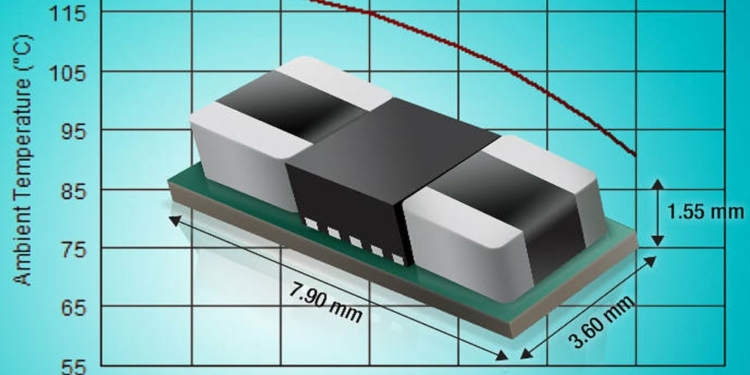source: Electronics Weekly news
Texas Instruments is claiming 6A output and up to 95% efficiency from 80mm2 of PCB, from its TPSM82480 DC/DC module.
The module, including mosfets and a pair of inductors (see photo) is 7.9 x 3.6mm (28mm2), and 1.5m high. The rest of the 80mm2 is made up of bulk input and output capacitors.
“Apart from the output and input capacitors, additional resistors or capacitors are only needed to enable features like soft start, adjustable and selectable output voltage as well as ‘power-good’ and/or ‘thermal-good’,” said TI in the data sheet.
6A output is maintained over the full -40°C to 125°C temperature range without additional airflow.
“This is accomplished using a two-phase [hence twin inductors] control topology that shares the load between the phases to ensure high efficiency and balanced operation,” said the firm.
Input range is 2.4 to 5.5V, and the output can span 0.6 to 5.5 V.
“The input voltage range of 2.4 to 5.5 V enables operation from typical 3.3V or 5V interface supplies as well as from backup circuits dropping down as low as 2.4V,” said TI.
Typical quiescent is 23µA.
Prototype samples are available now, in a 24pad quad flat micro (QFM) package.
Supporting design activity is the TPSM82480EVM-002 evaluation module and PSpice transient models, plus the firm’s Webench Power Designer tool.































